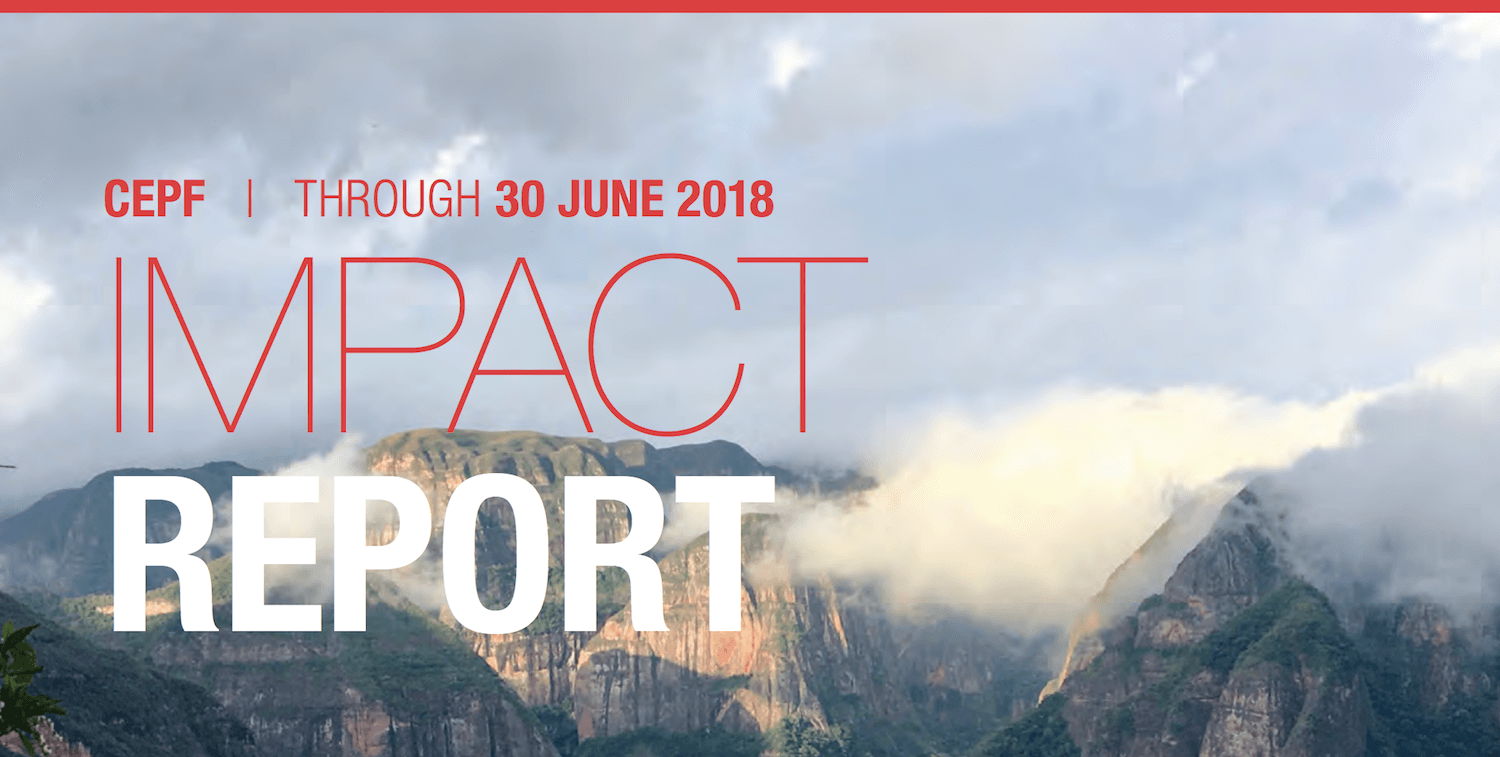Main menu
CEPF is a joint initiative of l’Agence Française de Développement, Conservation International, the European Union, Fondation Hans Wilsdorf, the Global Environment Facility, the Government of Japan and the World Bank.
Visitez le site français コア情報の日本語翻訳を読むOr use Google Translate to translate the English site to your language:
GTranslate

New Report On Cepf’s Global Impact
Here’s how our grantees are protecting biodiversity while improving the lives of local people
By: Marsea Nelson, CEPF senior communications manager
14 March 2019
14 March 2019
CEPF works to protect biodiversity by empowering civil society organizations (CSOs) such as nonprofit groups, indigenous peoples organizations and farmers’ cooperatives. Since we began awarding grants in 2001, we’ve given a total of US$232 million to more than 2,300 CSOs across 93 countries and territories.
But does the CEPF model work? Do our grantees’ projects protect biodiversity while helping local communities thrive?
Our Impact Report presents data from inception of the Fund in 2001, through June 2018.
Here are just a few of the findings:
- The creation of protected areas is a high priority for CEPF, and our grantees have helped create or expand 14.8 million hectares of new protected areas. That’s roughly the size of Nepal.
- It’s important to CEPF that we don’t just give a CSO funding, but that, in tandem, we help them increase their own capacity. That way, they’ll be better positioned to apply for grants from other donors in the future and make an even bigger impact on local conservation in years to come.
To track whether we’ve been successful in this effort, we piloted capacity self-assessments for grantees in 2009, and then expanded to all hotspots by 2012. Thus far, 69 percent of respondents have reported that their organization has more capacity—is stronger—after working with CEPF.
- Another important part of CEPF’s model is our focus on partnerships. Simply put, people can accomplish more together than they can on their own. We encourage grantees to form networks so that they can share and strengthen knowledge, reach and results.
Since CEPF began, we’ve helped create 222 partnerships. Recent examples include an organic farmers’ group in Indonesia, a resource monitors network in Vanuatu and a tourism service providers association in Peru.
- For conservation results to endure, local people need to be a part of the solution. That’s why training has been either the main focus or a component of 32 percent of all CEPF-funded projects to date.
Training could mean teaching beekeeping as a way to provide sustainable livelihoods and encourage better forest management; helping farmers learn organic cultivation techniques; or offering journalism students guidance on how to report on environmental issues. More than 149,000 people have received structured training through CEPF-funded projects.
We’re excited to share more results with you. Download the latest Impact Report (PDF – 4.4MB).




